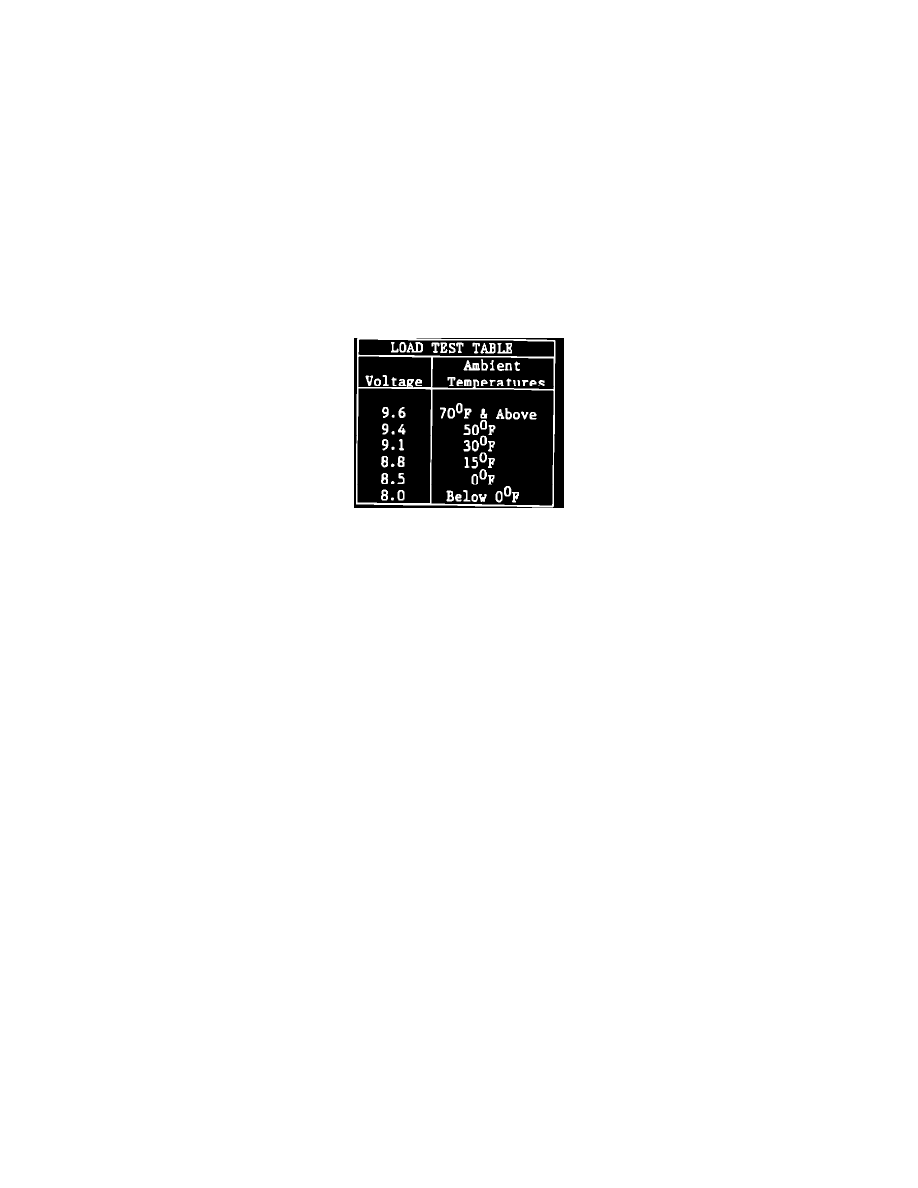XT-6 2WD L6-2.7L SOHC (1989)

1)
Attach variable carbon pile load test to battery terminals.
2)
Apply load test value of 1/2 of CCA rating. At 15 seconds, read battery terminal voltage. Then turn off load.
*NOTE: The OEM battery model identification number is molded
into its top surface. Refer to the following chart for CCA ratings of batteries used in recent years.
Model Number
Cold Cranking Amps.
5OD20R-MF
306
CCA
55D23L-MF
356
CCA
55D23R-MF
356
CCA
65D23L-MF
420
CCA
65D23R-MF
420
CCA
75D23L-MF
356
CCA
75D23R-MF
490
CCA
SOA4071110 (Replacement Battery)
525
CCA
SOA4071120 (Replacement Battery)
490
CCA
If battery being tested is not listed above, consult the specification chart in the Service Manual for model number and CCA rating.
3)
Determine battery temperature by touch and compare voltage reading with load test table.
4)
If voltage is less than table, replace battery. If equal to or greater, return battery to service.
Charging Information -
Single Battery Charging
Charger should be capable of delivering at least 60 amp rate of charge with adjustable charge rate.
1)
Connect battery to charger.
2)
Connect charger to power source.
3)
Set charger to high setting and charge battery.
4)
Monitor battery hourly for spewing, gassing or heat above 125~F. If this occurs and charging voltage is 16 volts or below, replace battery. If over
16 volts, allow to cool, then resume charging at reduced rate to avoid these conditions.
5)
Check charge acceptance hourly. If voltage is below 16 volts, continue charging. If 16 volts or above, check charge rate in amperes. If 5 amperes
or above, continue charging. If below 5 amperes, battery is sufficiently charged.
6)
Unplug charger, then disconnect from battery.
7)
Remove surface charge. See "State of Charge Check".
8)
Load test battery.
Important -
Age, capacity, state of charge and type of batteries
vary. Closely monitor batteries during any charging procedure.
Important -
Clean all terminals and make sure all electrical
connections are tight.
Important -
Battery should be charged at room temperature. After
charging battery, follow the load test procedure.
For batteries which have discharged and remain uncharged for a long period of time, it will be necessary to first remove sulfation from the battery plates.
First apply a high rate of charge (30 amps) for 1 to 1-1/2 hours observing the precautions in step 4 of "Single Battery Charging". Following this, apply
approximately a 6 amp charge until 3 successive specific gravity checks at 1 hour intervals reveal no increase in specific gravity readings. (May take as
much as 20 - 24 hours with a 6 amp charger).
OBSERVE ALL SAFETY PRECAUTIONS
